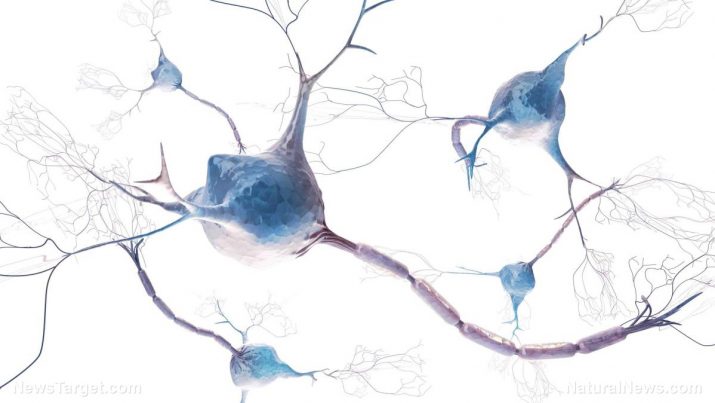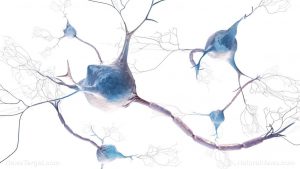
Porphyria – causes, side effects and treatments at NaturalPedia.com
Wednesday, June 13, 2018 by Michelle Simmons
http://www.naturalpedia.com/porphyria-causes-side-effects-and-treatments-at-naturalpedia-com.html

Porphyria is a group of genetic disorders that can affect the nervous system or the skin. Since these disorders are typically inherited, they are caused by abnormalities in genes passed from parents to children. The cells of a person with a porphyria fail to convert body chemicals called porphyrins and porphyric precursors into heme, which is the substance that gives blood its red color. The body produces heme primarily in the bone marrow and liver. This means that porphyrin can build up in tissues and the blood, leading to problems in the nervous system, skin, and other organs.
There are two main types of porphyria: acute and cutaneous. Acute porphyria mainly affects the nervous system. It causes damage to nerve cells because of the accumulation of raw chemicals that are usually used to produce heme. Moreover, it can also cause extreme discomfort. Only one out of five people who carry the gene for acute porphyria experience symptoms. Its attacks are uncommon before puberty or after menopause. On the other hand, cutaneous porphyria affects the skin and does not typically damage nerve cells. The build-up of porphyrin causes oversensitivity to sunlight. Its symptoms are typically less severe than those of acute porphyria, although its attacks tend to occur more often.

Known side effects of porphyria
There are three main side effects of porphyria: abdominal pain or cramping; sensitivity to light that can cause rashes, blistering, and scarring of the skin; problems with the nervous system and muscles, such as seizures, mental disturbances, and nerve damage. Other side effects may include muscle pain, muscle weakness or paralysis, numbness or tingling, pain in the arms or legs, pain in the back, and personality changes. The attacks can also lead to other life-threatening complications, such as low blood pressure, severe electrolyte imbalances, and shock.
Body systems harmed by porphyria
The body systems harmed by porphyria are the nervous system and the integumentary system.
List of foods or nutrients that prevent porphyria
There is no information on what foods or nutrients prevent porphyria. Yet, there are some foods that can help manage the condition. Incorporating a combination of simple and complex carbohydrates to your diet may help. Simple carbohydrates enter the bloodstream almost immediately, which helps reduce porphyrin production in the body right when you need it. On the other hand, complex carbohydrates provide the body with a steady time-released supply of glucose in order to maintain levels high and stable. Recommended simple carbohydrates are fruits, honey, syrup, and other sugary foods. For complex carbohydrates, beans, oats, and whole-grain bread and pasta are recommended.
Treatments, management plans for porphyria
There is no cure for porphyria, so its treatment is concentrated on managing the symptoms. Treatment options for acute porphyria may include pain medication; treating the underlying cause; medication called hematin, which is a type of heme the body can use; intravenous fluids and glucose; and admission to hospital in severe cases. Treatment options for cutaneous porphyria may include oral administration of activated charcoal, which helps absorb excess porphyrins, and daily supplementation with beta-carotene as part of long-term treatment.
Where to learn more
- 6 Best Anti Skin Rash Foods
- Fluorescent Light Bulbs Linked with Eczema, Seizures, Migraines, Skin Rashes
- Color of your urine reveals about your health
- 8 Urine Colors that Reveal Important Things About Your Health
- The unmatched health benefits of black seed oil
Summary
Porphyria is a group of genetic disorders that can affect the nervous system or the skin.
Porphyria primarily causes abdominal pain or cramping; sensitivity to light that can cause rashes, blistering, and scarring of the skin; problems with the nervous system and muscles, such as seizures, mental disturbances, and nerve damage.
Porphyria may also cause muscle pain, muscle weakness or paralysis, numbness or tingling, pain in the arms or legs, pain in the back, and personality changes.
Porphyria can lead to low blood pressure, severe electrolyte imbalances, and shock.
Porphyria can be treated with medications, activated charcoal, and supplementation of beta-carotene.
Sources include:
Tagged Under: Tags: Porphyria





